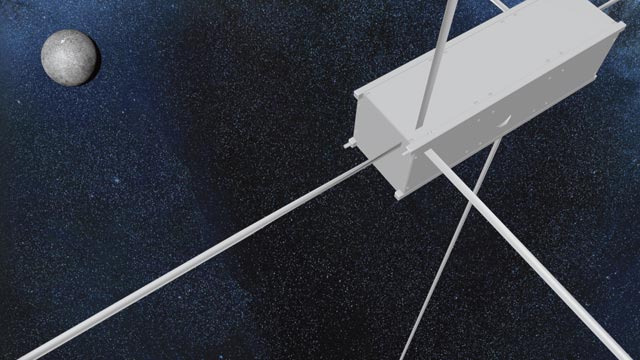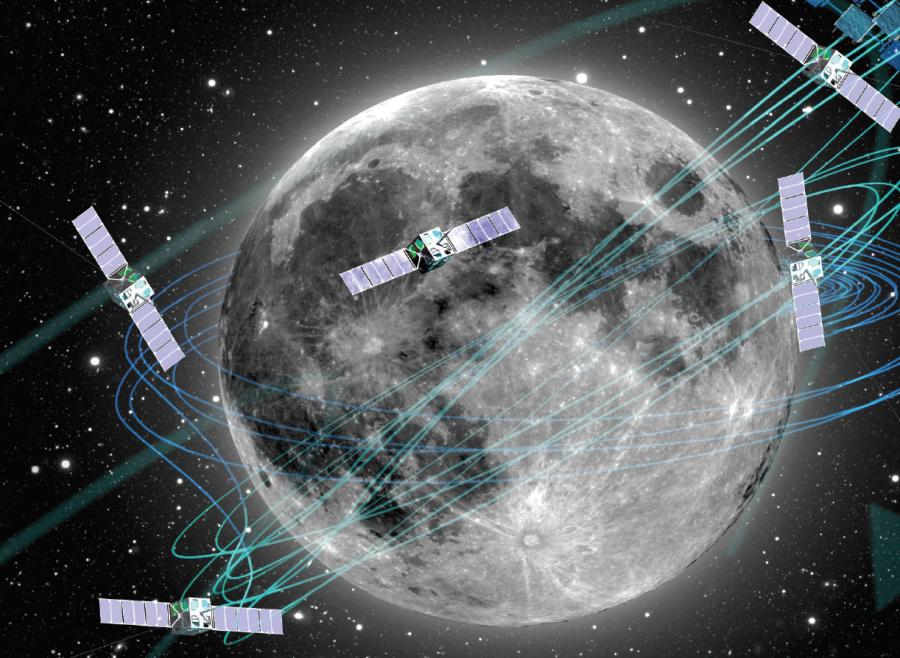Low-frequency distributed radio telescope in space (OLFAR)
Low frequency observations
One of the last unexplored frequency ranges in radio astronomy is the frequency band below 30 MHz. This band is scientifically interesting for exploring the early cosmos at high hydrogen redshifts, the so-called dark-ages. This frequency range is also well-suited for discovery of planetary and solar bursts in other solar systems, for obtaining a tomographic view of space weather, and for many other astronomical areas of interest. Because of the ionospheric scintillation below 30 MHz and the opaqueness of the ionosphere below 15 MHz, earth-bound radio astronomy observations in those bands would be severely limited in sensitivity and spatial resolution, or would be entirely impossible. A radio telescope in space would not be hampered by the earth's ionosphere, but up to now such a telescope was technologically not feasible. However, extrapolation of current technological advancements in signal processing and nano/femto satellite systems imply that distributed low frequency radio telescopes in space could be feasible in about 10 years time.
Satellite system design
To achieve sufficient spatial resolution, a low frequency telescope in space needs to have an aperture diameter of over 10 to 100 km. Clearly, only a distributed aperture synthesis telescope-array would be a practical solution. In addition, there are great reliability and scalability advantages by distributing the control and signal processing over the entire telescope array. The aim of the OLFAR project is to design a concept study on an autonomous sensor system in space to explore this new frequency band for radio astronomy. The project will develop scalable autonomous nano-satellite prototypes, demonstrated in the lab. The results will be validated by three flight units, which can be launched into space and work as a formation flying radio-astronomy array.
Project presentation
Here is a presentation on wireless localization (Apr 2014) that summarizes some of the results of the OLFAR project.


Project data
| Researchers: | Alle-Jan van der Veen, Raj Thilak Rajan |
|---|---|
| Starting date: | May 2010 |
| Closing date: | May 2014 |
| Funding: | 1000 kE; related to group 400 kE |
| Sponsor: | STW ASSYS |
| Partners: | University Twente; TU Delft Fac. EEMCS (CAS group, ELCA group); TU Delft Fac. Aerospace (SSE group); ASTRON |
| Contact: | Alle-Jan van der Veen |